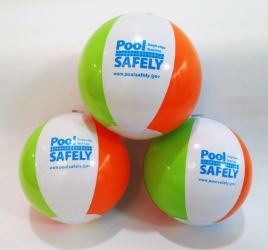More Arizona children are drowning, a government safety commission reported late last week, prompting a new call for parents and caretakers to be extra-cautious.
"Watch your children around water" is a message Arizonans — who have higher-than-average swimming-pool ownership — have heard repeatedly over the years. But according to new statistics, that message too often goes unheeded.
Twenty-four children drowned in Arizona pools and spas in 2016, up from 20 in 2015, according to media reports examined by the USA Swimming Foundation on behalf of the U.S. Consumer Product Safety Commission (CPSC). By comparison, three children have died from accidental shootings in the past two years.
"While cold weather has arrived for much of the country, many families are still swimming in indoor pools and water parks, taking swimming lessons, and enjoying time around the water while on vacation," Christina Saull, a spokeswoman for the CPSC, said in a written statement. "It's important for parents to remember that water safety is not just a summertime issue, but something that needs to happen year round."
The actual number of drownings might be even higher than the CPSC report indicates. For one thing, not all drownings make the news; what's more, researchers aren't able to comb through every news publication in Arizona.
Holly Ward, a spokeswoman for the state Department of Health Services, says that health officials have no evidence that would dispute USA Swimming Foundation's data.
Over the summer, the Centers for Disease Control and Prevention reported that Arizona’s child drowning rate is 25 percent higher than average, and that children between the ages of 1 and 4 are drowning at twice the national average.
The state is also home to myriad programs and public-safety campaigns warning against child drownings and providing information about pool safety. In August, for instance, Phoenix Children's Hospital kicked off its 13th annual Drowning Impact Awareness Month, with safety advocates placing 800 ribbons on trees around the hospital to mark the number of children who either drowned or were injured severely by a partial drowning in the state since 2000. Pool companies offer similar warnings or advice.
Still, grisly news stories are a common sight. This past November, for example, a 4-year-old boy climbed out of a window in Mesa and died after being found in a swimming pool. In August, 2-year-old twins were rushed to the hospital after an unsupervised plunge into a hot tub. One of the toddlers died.
The CPSC urges people to take these steps to reduce the possibility of drownings:
• Never leave a child unattended in a pool or spa, and watch kids closely around any body of water.
• Designate a "water watcher" to supervise children. "This person should not be reading, using a smart phone, or be otherwise distracted," the commission states.
• Learn how to swim and teach your children to swim.
• Learn how to perform CPR on children and adults.
• Keep children away from pool drains, pipes, and other openings to avoid entrapments.
• Ensure any pool or spa you use has drain covers that comply with federal safety standards; if you don't know, ask whether the drains are "VGB compliant."
Additionally, the CPSC’s Pool Safely campaign urges parents and kids to take the Pool Safely Pledge before going in or near the water this year.
[
{
"name": "Air - MediumRectangle - Inline Content - Mobile Display Size",
"component": "18478561",
"insertPoint": "2",
"requiredCountToDisplay": "2"
},{
"name": "Editor Picks",
"component": "16759093",
"insertPoint": "4",
"requiredCountToDisplay": "1"
},{
"name": "Inline Links",
"component": "17980324",
"insertPoint": "8th",
"startingPoint": 8,
"requiredCountToDisplay": "7",
"maxInsertions": 25
},{
"name": "Air - MediumRectangle - Combo - Inline Content",
"component": "16759092",
"insertPoint": "8th",
"startingPoint": 8,
"requiredCountToDisplay": "7",
"maxInsertions": 25
},{
"name": "Inline Links",
"component": "17980324",
"insertPoint": "8th",
"startingPoint": 12,
"requiredCountToDisplay": "11",
"maxInsertions": 24
},{
"name": "Air - Leaderboard Tower - Combo - Inline Content",
"component": "16759094",
"insertPoint": "8th",
"startingPoint": 12,
"requiredCountToDisplay": "11",
"maxInsertions": 24
}
]













